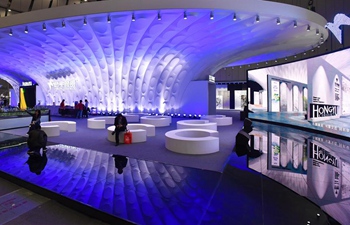SAN FRANCISCO, April 21 (Xinhua) -- A start-up is not like a smaller version of a large company, and scientists who wish to commercialize their inventions need some special techniques and tools to make it happen, a well-known Silicon Valley start-up mentor has said.
Steve Blank, a serial entrepreneur-turned-educator who is known for his Customer Development Method that launched the Lean Startup Movement, talked to Xinhua in a recent interview.
In 2011, the National Science Foundation (NSF) adopted his Lean LaunchPad course offered at Stanford University to teach scientists who receive grants from the NSF and want to commercialize their ideas and inventions.
The NSF calls the program I-Corps, or Innovation Corps, and it is now taught in 88 U.S. universities.
"The main purpose is giving them an idea that their invention is only a small part of starting a company. That's hard for a scientist to understand this," said Blank, who founded eight companies in his 21 years of career as an entrepreneur.
In the course, he used a single piece of paper called a business model, which listed things that scientists need to deal with in doing business, including how to price the product and how to sell it.
After that, he told scientists and engineers to write down all their assumptions and hypotheses on doing business.
The next step is what Blank summarized as an "outside the building" method, which means going out of the lab and talking to potential customers, testing the hypotheses, and incrementally building on their products until they are ready for the market.
"Although they are kind of forced to take this course at the beginning, as this is a requirement for them to get the funding from the NSF, but at the end of the course many students would say this is the closest course they would ever get to build a start-up," said Blank, also an adjunct professor in the Department of Management Science and Engineering at Stanford University and a senior fellow at Columbia University.
"It changed the trajectory of how science is commercialized," said Blank. "We truly have changed how our scientists who run our labs, think about how to apply the science."
The distinction between building a start-up and running a smaller version of a big company is like speaking totally different languages. In Blank's view, large companies just hire people to execute known business models, while start-ups keep searching for a viable business model, which needs their own techniques.
"The irony is that large companies are using tools from start-ups, trying to keep up with competitors, given the speed of innovation and the intensity of competitions," said Blank.
Having traveled to China and talked to Chinese start-ups, Blank said his biggest impression is the amount of energy, the amount of learning, and the amount of experimentation happening there.
"People that say the Chinese just copy don't understand the history of technology innovation cycle," said Blank. "Newcomers start by learning from others, just as what happened in Britain, the U.S. and Japan."
But eventually, they will have enough well-educated people who know the knowledge of technology, science and engineering, and start innovating themselves, he added.












